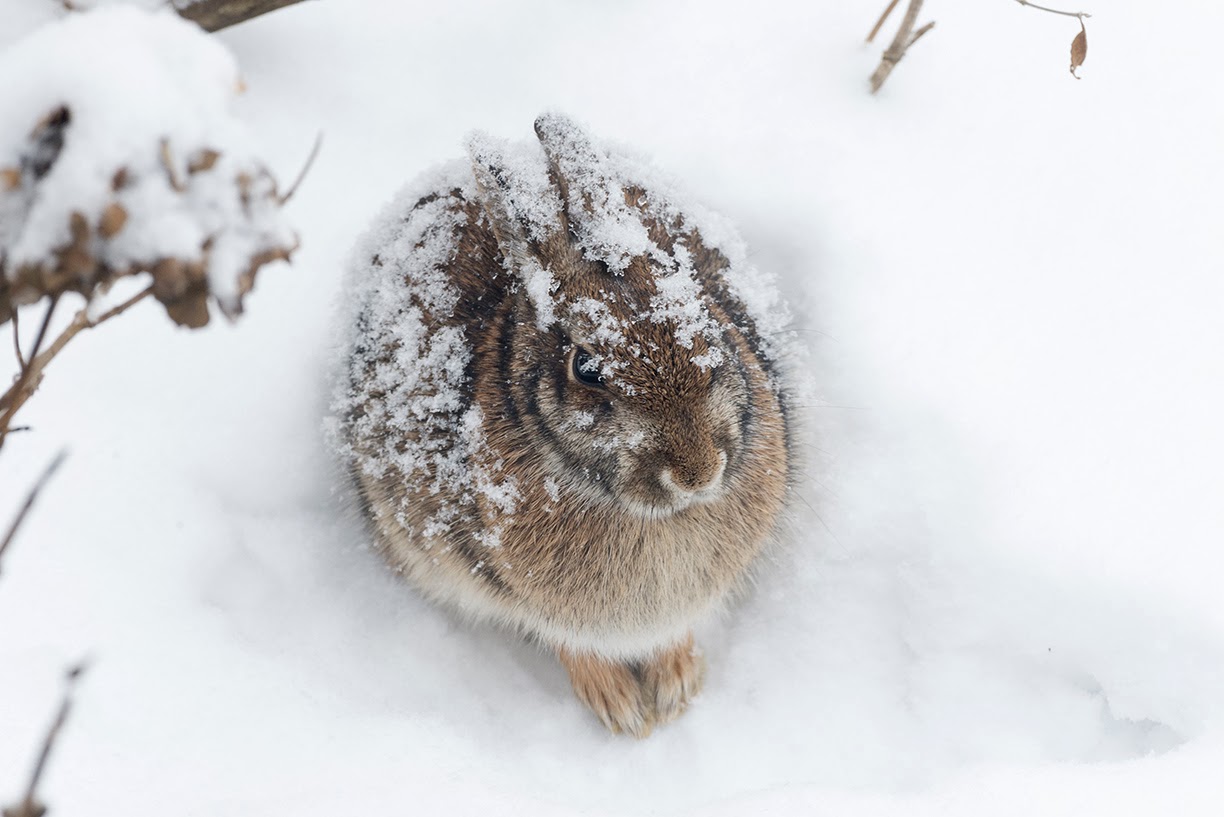Rabbit in the Snow
I was gazing out the window, looking under the
butterfly bushes at the juncos scrambling for seed when I saw what looked like
a piece of a log slowly being covered with snowflakes. But it wasn’t a log at
all – it was a rabbit! It was resting in a depression atop last week's snow. Its fur was
puffed up like a down blanket, protection against the cold.
Rabbits do not hibernate in the winter. I have seen several
cottontails bounding through my yard all season even when the temperature has
been cold enough to keep me inside.
I thought it might like a carrot, given that snow had been
covering the ground for the better part of a week and no doubt interfered with
the animal’s foraging. I didn’t want to throw it out the window and scare the rabbit
away so when I saw it had moved away, I tossed out a nice, juicy organic carrot
and hoped it would come back and find the treat. It didn’t – return or eat the
carrot.
What I found out was that rabbits change their dietary needs
in the cold weather, from vegetables (yes, gardens are a prime venue for these
creatures in the spring and summer) to buds, seeds, twigs, branches, and pine
needles. We have all of those in our backyard so I guess the rabbit felt
welcome but didn’t need the carrot.
BTW Did you ever wonder why rabbits are often called
bunnies? Bun is an old English word for “little tail.” More often a baby rabbit
is referred to as a bunny, a more endearing term for a small, let’s face it,
adorable animal.
But rabbits, cute as they are, are still wild and should be
respected as such. We can live together and appreciate each other. All
creatures have their place, habits, preferences, and way of life and can be
valued for the diversity we all bring to the earth - even as we protect our
gardens from the bunnies.
Literally, anything you might ask about rabbits is answered
here:





No comments:
Post a Comment